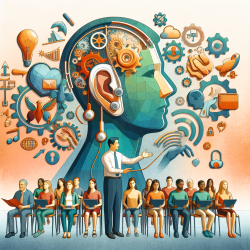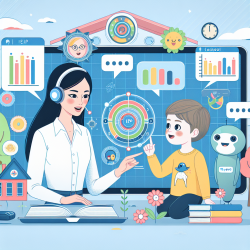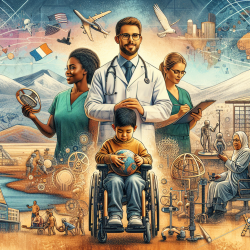Introduction
Children with Autism Spectrum Disorder (ASD) often face significant challenges when accessing dental care. The sensory sensitivities and heightened anxiety associated with ASD can make routine dental visits daunting, leading to poorer oral health outcomes compared to their neurotypical peers. Recent research, however, is shedding light on innovative solutions that can transform dental experiences for these children.
The MyDentist Project: A Groundbreaking Approach
The study titled “Mom Let’s Go to the Dentist!” explores the MyDentist project, a tailored dental intervention for children with ASD in the Italian Public Health Service. This project integrates classic dental care techniques with innovative Information and Communication Technologies (ICT) to create a supportive environment for children with ASD. The aim is to familiarize them with dental settings and procedures, reducing anxiety and improving cooperation.
Key Findings and Implications for Practice
The MyDentist project demonstrated significant improvements in oral hygiene and cooperation during dental treatments over a six-month period. Parents reported high levels of satisfaction with the ICT support, which included video modeling and social stories tailored to each child’s needs. These tools helped children become more comfortable with dental visits, translating into better oral health practices at home.
The success of the MyDentist project underscores the importance of personalized interventions that consider the unique sensory and communication needs of children with ASD. Practitioners are encouraged to explore the integration of ICT in dental care, which can be a cost-effective alternative to pharmacological interventions.
Encouraging Further Research
While the MyDentist project offers promising results, further research is needed to explore its application in diverse settings and with larger populations. Practitioners should consider conducting their own studies to assess the feasibility and effectiveness of similar interventions in their practice. Collaboration with interdisciplinary teams, including speech therapists and psychologists, can enhance the design and implementation of these interventions.
Conclusion
The MyDentist project provides a compelling model for improving dental care for children with ASD. By leveraging ICT and personalized approaches, practitioners can significantly enhance the dental experiences and outcomes for these children. As we continue to innovate and adapt our practices, we can ensure that all children have access to the dental care they need and deserve.
To read the original research paper, please follow this link: “Mom Let’s Go to the Dentist!” Preliminary Feasibility of a Tailored Dental Intervention for Children with Autism Spectrum Disorder in the Italian Public Health Service.










